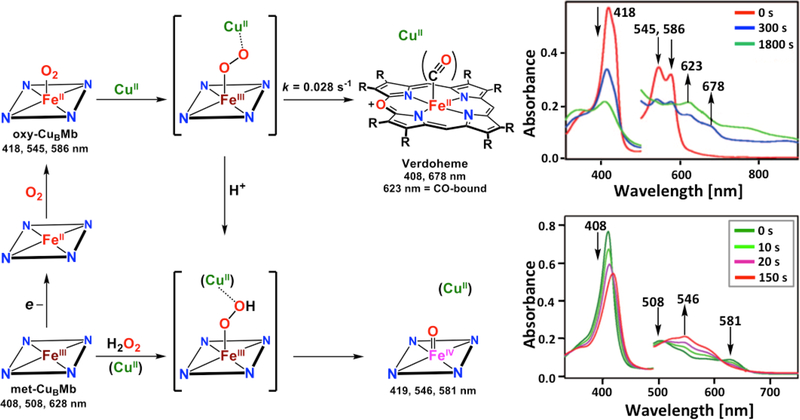Figure 142.
Copper- and proton-dependent reaction pathways of CuBMb beginning with met-CuBMb (bottom, left). In the presence of CuII, oxy-CuBMb decays and self-oxidizes to yield verdoheme (HO-type heme degradation chemistry, top pathway and spectra). If there are protons available in the active site (provided by H2O2), the product is ferryl-heme (“peroxide shunt” mechanism known for P450s, HCOs), suggesting that proton shuttling to the active site and H-bonding residues are important for directing the mechanism toward O–O cleavage rather than ROS release. Adapted with permission from ref 832. Copyright 2008 Verlag Helvetica Chimica Acta AG.

